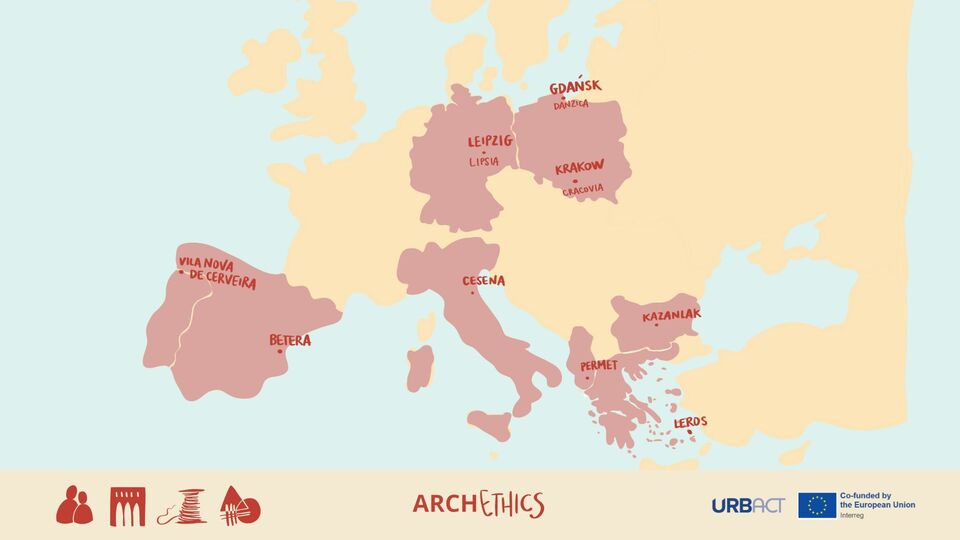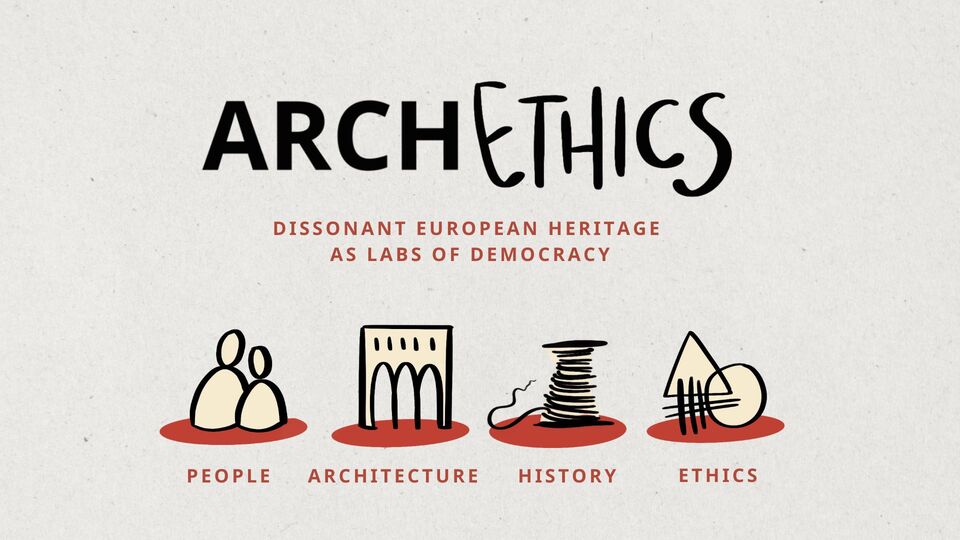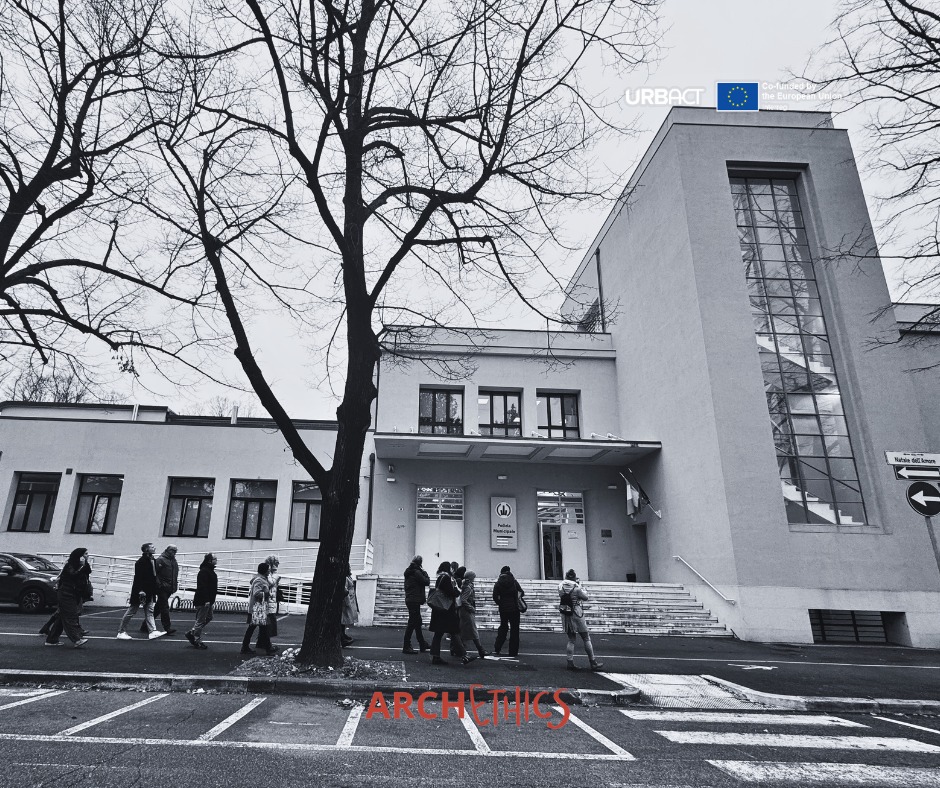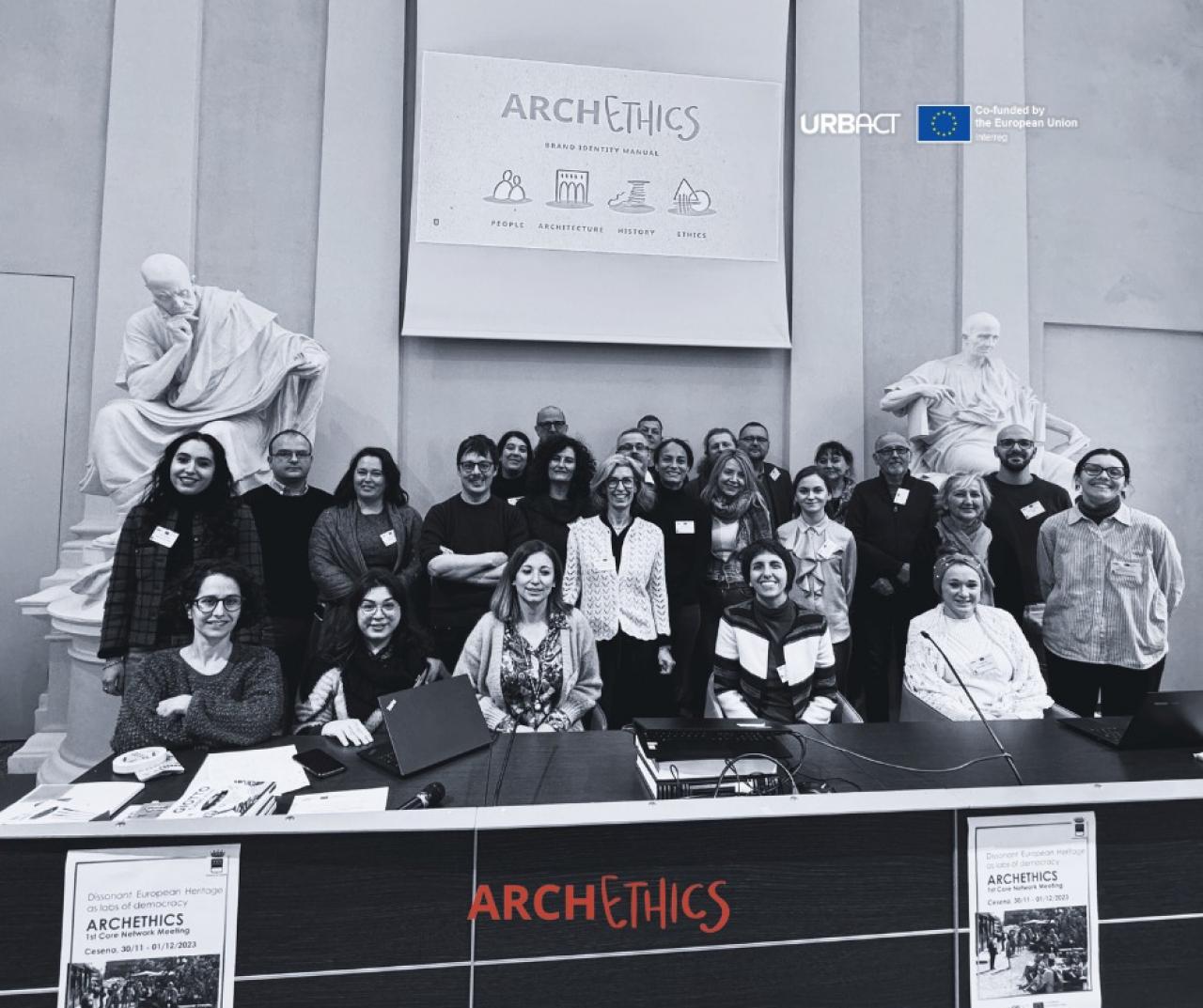Why a project on Dissonant Heritage?
The Municipality of Cesena in Italy decided to lead the ARCHETHICS network to explore challenges and opportunities of dissonant heritage and increase awareness in Europe focusing on the heritage dating from the 20th century. Cesena recently joined the working group on the Action 10 of the Partnership on Culture and Cultural Heritage of the Urban Agenda for the EU and ATRIUM, the Cultural route of the Council of Europe on Architecture of Totalitarian Regimes of the 20th Century in Europe’s Urban Memory. By setting up a project on Dissonant Heritage, the city of Cesena is willing to contribute to the Urban Agenda and ATRIUM.
With the purpose to enhance the discussion at European level, the city of Cesena, together with other eight cities co-designed ARCHETHICS, the first URBACT Network dealing with Dissonant Heritage. It provides a space for dialoguing on the possibilities offered by this complex heritage to strengthen the value of democracy and open new opportunities for society, urban and regional development, cultural tourism, and education.Unfortunately, although the dissonant heritage sites of many European cities represent enormous attractive potential, they are neglected and abandoned . ARCHETHICS is willing to address novel approaches for Dissonant Heritage in order to ensure a better understanding of managing this challenging heritage and open new possibilities for new cultural and tourist routes.
The ARCHETHICS Network

ARCHETHICS brings together nine European cities of different sizes that have in common the presence of a Dissonant Heritage characterised by very diversified typologies. In some cases, it is submerged or sleeping, discussed and controversial; it is located in different urban contexts, that is to say in the city centre or rural areas; it has different states of conservation and belongs to different eras.
The cities of Krakow (PL), Gdansk (PL), Kazanlak (BL) and Permet (AL) focus on social realism period by putting in the spotlight case studies about work neighbourhoods, cultural civic centres, propaganda monuments and buildings, symbolic heritages representing the communism and socialist ideologies. The city of Leipzig concentrates its research on the former Matthäikirchhof area, the urban area that belonged to “Stasi”, during the Est Germany period. The cities of Cesena (IT) and Leros (EL) focus on dissonant heritage sites, built during the fascist period. Cesena is willing to study some educational and industrial buildings, and war infrastructures, while Leros focuses on the military town of Portolago and iconic buildings. Betera (ES) proposes to analyse an air-raid shelter and a trenches area belonging to the Spanish Civil War. Vilanova de Cerveira (PT) chose the Cerveira Castle, a border infrastructure, positioned in the city centre, now completely abandoned.
Four Dimensions to investigate the Dissonance
Architecture, People, History and Ethics are the four project dimensions to explore the potential of Dissonant Heritage. Indeed, they help to address the multi-perspective understandings of the past and vision new possibilities for the future. Through these dimensions, ARCHETHICS is willing to activate urban communities to boost their interest on their dissonant heritage and foster a reflection on a possible transformation or a valorisation of those heritages into places for locals and visitors, where sharing knowledge, setting up urban laboratories and promoting a critical touristic visiting.
ARCHETHICS will organise two masterclasses with historians, architects, and experts to follow up the four dimensions. History and Ethics will be explored by proposing a novel storytelling approach that consider important common stories and official histories, through the lens of the multi-perspective, gender and diverse approach. Architecture and People dimensions will be studied by advising new opportunities of linking between those two represented by community planning and participation approach.

Looking ahead: a contribution for European democracy and civic participation
The nine cities partners of ARCHETHICS are committed to delivering high Integrated Actions Plans for managing their Dissonant Heritage through the support of their local stakeholders and activists through a participative working group, called URBACT-ARCHETHICS Local Group. Throughout 24 months of project development, the cities partners will have the possibility to work at local and transnational level with the support of URBACT experts, Dissonant Heritage experts and International Organisations. They will participate at five transnational meetings and will have the possibility to share their results during an international final event.
City coaching and bilateral exchanges will be also organised to foster exchange and learning and promote innovation in cities.
At Network level, ARCHETHICS will also develop some project outputs. Among them, a city guide with practical tools to manage Dissonant Heritage through the four project dimensions and a Charter & common glossary on Common vision on ethical/cultural approach for Dissonant Heritage.



